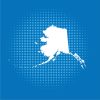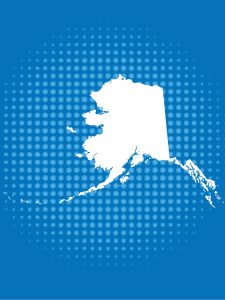In Alaska, the percentage of homeschooled students peaked at 27% of families during the pandemic.
History
Alaska is located in the extreme northwest of the North American continent. Homeschooling was legalized in 1997. Prior to the official legalization, homeschooling families practiced as private or correspondence students, a practice that continues today given the remote location of many families.
Regulation
Parents of students from 7 to 16 years old, who want to homeschool are not required to notify the state of their intent in Alaska. The state offers four distinct homeschool options: homeschool statute, correspondence program, private tutor, and private school. No specific parent/teacher qualifications, instructional hours, subjects, or records are required under the homeschooling statute. Parents may school from home by using a tutor or private school, but those options have different requirements. For example, a tutor must be certified, and private schools must provide attendance calendars and corporal punishment policy. Also, standardized testing is required in homeschools operating as private schools in grades 4, 6, and 8. As mentioned, families can also learn via a correspondence program.
Alaska does have a statute on public education access that allows all nonpublic students access to public school courses but does not guarantee admittance to extracurricular activities. Alaska Stat. §14.30.365 (also here). These courses are publicly funded and unlimited. It is not clear whether the state provides access to special education services for these students.
State Data
Since Alaska does not require parents to file a notice of intent to homeschool, the state does not collect or report any data on homeschool participation. As a result, there is less information about homeschooling numbers in Alaska. The best evidence comes from data from the U.S. Census which estimates that 9.6% of families homeschooled in the state in the spring of 2020. By the fall of 2020, homeschooling in Alaska increased to 27.5%. This is over double the national average of 11.1% during the same time and the highest in the country. Based on U.S. Census data, our calculations indicate that about 12.56% of K-12 students in Alaska were homeschooled during the 2022-23 school year, and 16.15% during the 2023-24 school year. Due to survey changes, the data from 2020 reflects the percentage of households, while the data from following years reflects the percentage of students.
Cross-Sector Comparison
We cannot calculate a cross-sector comparison because we lack information on homeschool participation.
School Choice Context
In Alaska, parents have multiple school choice options in addition to homeschooling. These include traditional public, private, magnet, limited charter, and virtual online school options. Boarding and residential schools are also necessary options, given the dispersed population. Alaska prohibits inter-district choice but permits intra-district choice if the assigned school is unsafe. While lawmakers have considered voucher and Education Savings Account (ESA) programs, none are currently available, and the state does not provide public funds for homeschooled students.
Commentary
If the Census estimates are correct, Alaska has one of the highest homeschool participation rates in the country. More research and data are needed.

-
27.5% Families
Around 27.5% of families in Alaska homeschooled during the height of the pandemic (Fall 2020).
-
1997 Legalized
Homeschooling in Alaska was legalized in 1997.
-

-
More Information
27.5% Families
Around 27.5% of families in Alaska homeschooled during the height of the pandemic (Fall 2020).
1997 Legalized
Homeschooling in Alaska was legalized in 1997.

More Information
Last updated March 2025.